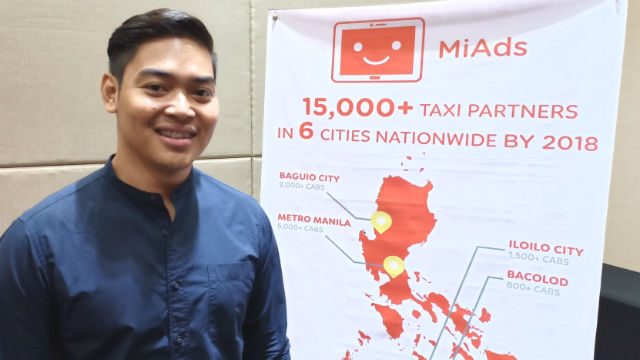SUMMARY
This is AI generated summarization, which may have errors. For context, always refer to the full article.

MANILA, Philippines – A ridesharing service has set up shop in Manila, promising to supply an additional 5,000 taxis by June to a ridesharing market currently dominated by Grab. Called Micab, the service launched in 2012 in Cebu before expanding to a few other provincial markets. In April this year, it got the nod of the Land Transportation Franchising and Regulatory Board to operate in Manila.
Since Grab acquired chief rival Uber’s Southeast Asia operations in March, the ridesharing market has practically operated in a monopoly. The arrival of Micab, and other upcoming ridesharing services such as Owto, Go Lag, Hype, and Hirna, is expected to restore some balance to the market. For consumers, the arrival of new players sparks hope that it will eventually be faster to book a ride, and that drivers will behave more fairly at the risk of losing customers to other players.
We talked to Eddie Ybañez, founder and CEO of Micab, on how they’ll be addressing issues that currently plague the ridesharing market. Micab’s primary edge against other competitors, says Ybañez, is that it won’t be charging booking fees and do surge pricing because the business is supported by its ad service, MiAds. Watch our quick video above for the rest of his answers or read the transcript below:
Q: What’s your edge over the competition?
Eddie Ybañez: At Micab, what we’re doing is we’re improving the taxi industry by providing safety, and a more convenient way to hail a ride. But the good thing with this is this promise comes very affordably.
Because whatever the existing fare structure is, that’s what passengers have to pay. We don’t have a booking fee or surge pricing. I think that’s what our edge is compared to all the other players.
Q: How many taxis will Micab be able to bring to the ridesharing market?
EY: Our partners are capable of producing, in Manila alone, 15,000. That’s our target. That’s our target but the moment our other fleets sign on, we’ll have more taxis. Our target is about 30,000, maybe.
Q: Now we’re at 5,000 in Manila?
EY: 5,000 by June.
Q: When do we reach 15,000?
EY: We’re targeting early next year to reach 15,000 in Manila. Nationwide, the 15,000-taxi goal is now doable, because they have already signed on.
Q: How are you addressing bad driver behavior?
EY: Before, there was no platform, no system for taxis. It was just the passenger and the driver who knew what was going on during the trip. If the driver did something, only the passenger would know – unless he posts it on Facebook or something.
But with Micab now, passengers have the power to report, to rate the driver, to commend the driver or file a complaint. The moment a 3-star rating is reported – even without details – our customer service will call the passenger and driver to investigate.
Depending on the severity of the complaint, the drivers may be forced to go under re-training, or they will be taken off the platform, penalized by the operator, or if it’s a criminal offense, government agencies can step in, and impose penalties.
The driver’s license can get suspended for the next 3 months, 6 months or 1 year – that’s an existing ruling at the LTFRB.
We’re actually sharing the system with the taxi operators and the government agencies.
Q: Will drivers see their passenger’s destination prior to accepting a trip? This has been seen as a reason why drivers are able to cancel on and pick passengers at will.
EY: Brainstorming on the decision whether to retain the driver’s ability to see passenger destination or not was tough. But eventually, the decision for us to allow the driver to see the destination won.
Why? As much as possible, we don’t want confrontations. We don’t want them to fight in the streets just because, say, a driver finds out that the destination is Bulacan. They might just end up fighting.
But since we’re allowing that, we’re limiting the number of times a driver can ignore or reject a request.
The moment a driver rejects 3 requests in one day, they will be blocked in the system for a day.
This will affect their rating. The moment they reach a 3-star average rating, they won’t be able to get passengers unless they do re-training.
Q: What happens when a passenger reports a driver who asks for additional fees?
EY: The operations team will investigate the incident. When they investigate, we’ll have access to their conversation on the app. So we can trace that. So passengers are actually protected. If a driver asks for a fixed contract rate for a trip, which is illegal, we can even report that to the LTFRB.
There’s a record of the conversation between passenger and driver. There’s evidence.
This is the big difference between now and then. Now there’s someone looking at them. The drivers themselves will behave better knowing that someone is monitoring them, like a parent to a child.
Q: How fast can a passenger book a ride?
EY: Currently, we average 10 minutes, but we’re still ramping up in Manila. We haven’t even launched officially, but we’re operational already. The app is downloadable already. There are around an extra 1,000 cabs [about to be activated].
But we’re trying really that by the end of June, we have 5,000 cabs.
Hopefully, the moment more cabs get enabled – it’s just supply and demand, really – ride acceptance becomes faster. – Rappler.com
Add a comment
How does this make you feel?





There are no comments yet. Add your comment to start the conversation.